You are here
New Releases
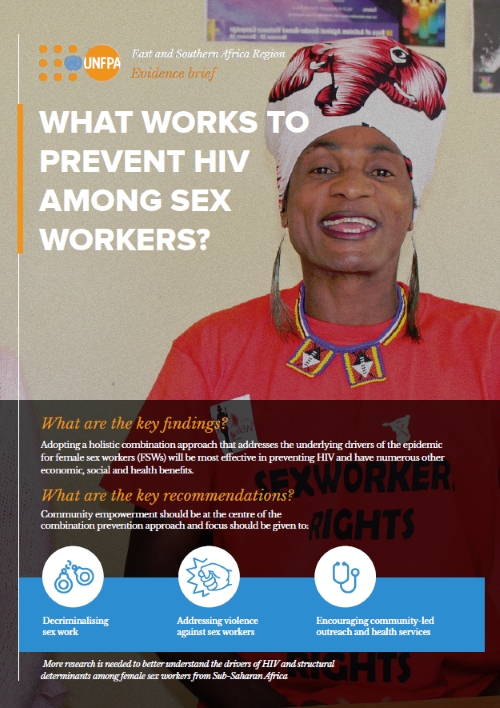
What works to prevent HIV among sex workers?
This evidence brief provides evidence on what works to prevent HIV among sex workers.

Crisis in Burundi
UNFPA has worked in Burundi since 1980 and throughout its civil war. After 2006, peace allowed UNFPA and its partners to expand their outreach, resulting in a promising progress curve for the reproductive health of Burundians. However, Burundi exploded in pre-electoral violence in April 2015. Just when the nation was rebuilding its social fabric and improving the economy, the socio-political unrest erased those gains and brought untold misery. The United Nations warns that the humanitarian situation could deteriorate quickly, even without full-blown conflict, given Burundi’s fragility. In very difficult conditions, UNFPA and its partners multiply interventions among internally displaced and refugee populations to improve reproductive health services and care for survivors of gender-based violence. To continue and expand our work, we require almost US$8,700,000.

State of World Population 2015
We live in a world where humanitarian crises exact mounting costs from economies, communities and individuals. Wars and natural disasters make the headlines, at least initially. Less visible but also costly are the crises of fragility, vulnerability and growing inequality, confining millions of people to the most tenuous hopes for peace and development.

Realizing the Demographic Dividend
The Demographic Dividend is an evidence-based economic development phenomenon and the focus of nearly 20 years of research by economists, demographers, and health scientists.
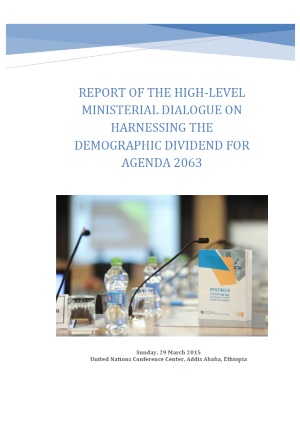
Report of the High-Level Ministerial Dialogue on Harnessing the Demographic Dividend for Agenda 2063
UNFPA (United Nations Population Fund), in collaboration with the Economic Commission for Africa (ECA), held a high level ministerial dialogue with African Ministers in charge of planning, finance and economic development on the issue of harnessing Africa’s potential demographic dividend on the 29thMarch 2015. This high level event occurred on the margins of the First Specialized Technical Committee on Finance, Monetary Affairs, Economic Planning and Integration and the ECA Conference of African Ministers of Finance, Planning and Economic Development, which was devoted to the theme of ‘Implementing Agenda 2063 - Planning, Mobilizing and Financing for Development’.
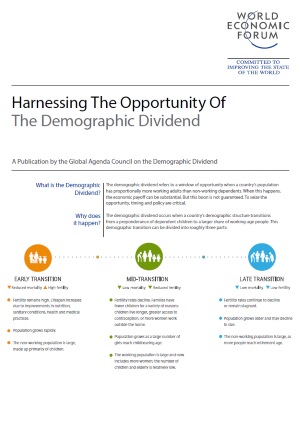
Harnessing The Opportunity Of The Demographic Dividend
The demographic dividend refers to a window of opportunity when a country’s population has proportionally more working adults than non-working dependents. When this happens, the economic payoff can be substantial. But this boon is not guaranteed. To seize the opportunity, timing and policy are critical.

UNFPA: A Value Proposition for the Demographic Dividend
Sustainable development cannot be achieved without assuring that all women and men, girls and boys, enjoy the dignity and human rights to expand their capabilities, secure their reproductive health and rights, find decent work, and contribute to sustainable economic growth.
Defining the necessary policies and investments to secure that future, demands that governments throughout the world know the size, sex, location, and age structure of their present and future populations, so that they can tailor investments for inclusive growth, and leave no one behind.
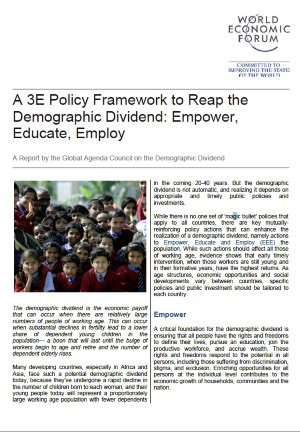
A 3E Policy Framework to Reap the Demographic Dividend: Empower, Educate, Employ
The demographic dividend is the economic payoff that can occur when there are relatively large numbers of people of working age. This can occur when substantial declines in fertility lead to a lower share of dependent young children in the population— a boon that will last until the bulge of workers begin to age and retire and the number of dependent elderly rises.

Trends in Maternal Mortality: 1990 to 2015
In East and Southern Africa, the maternal mortality ratio declined from 918 maternal deaths per 100,000 live births in 1990 to 407 per 100,000 in 2015 - a drop of 56 per cent. This means a 1:52 lifetime risk of maternal death in the ESA region. The global maternal death ratio fell by 44 per cent between 1990 and 2015. The total number of maternal deaths around the world dropped from about 532,000 in 1990 to an estimated 303,000 in 2015. This equates to an estimated global maternal death ratio of 216 maternal deaths per 100,000 live births, down from 385 in 1990.
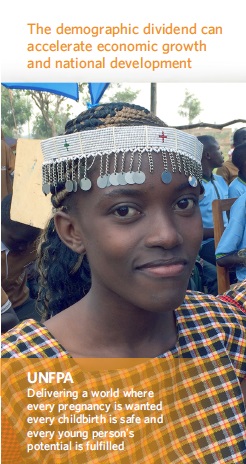
Demographic Dividend Brochure
The demographic dividend is the economic benefit that can arise when a population has a relatively large proportion of working age people, and effectively invests in their empowerment, education and employment.